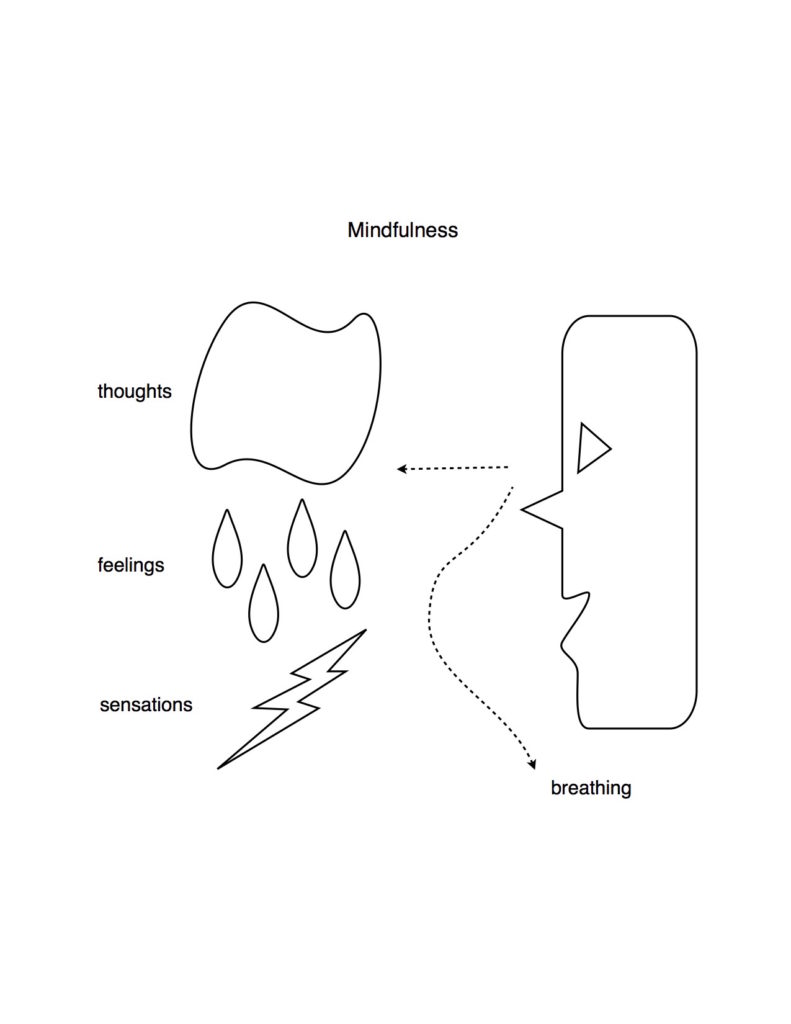A basic introduction to the remarkable realization that is mindfulness:
drspencersherman.com
Mindfulness

Practicing Mindfulness
Step One—Find a peaceful place where you won’t be disturbed. Sit in a comfortable, upright position. Loosen or remove your shoes and anything that’s tight. Close your eyes, or look down. Let your face and body begin to relax.
Step Two—Pay attention to your breathing: your abdomen moving in and out, your chest rising and falling slightly, the air flowing through your nostrils. Let your belly be soft. Don’t try to adjust your breathing—let it be just as it is. When you discover that your attention has wandered from the breath, return to it. Let your body continue to soften. Don’t struggle to stay aware of your breathing. Just focus on it gently. Each time attention goes elsewhere, come back to attending to the breath.
Step Three—After a while, you’ll be able to notice all that’s occurring without losing awareness of the breath. If you become completely absorbed in anything—usually thought—return attention to your breathing when you realize you’ve forgotten it. Then continue noticing your breathing, as well as thoughts, feelings, and sensations.
Don’t try too hard or expect too much. Mindfulness takes practice, and improves with time. Consider each sitting as an opportunity to relax and gradually train your attention. Eventually it will learn to stay where you put it. And you’ll clearly notice whatever’s happening without becoming drawn into it. Instead of being caught in the weather, you’ll be the clear and open sky in which the weather comes and goes naturally.

Be the Sky, Not the Clouds
Mindfulness is conceptually very simple. Instead of being drawn into whatever you’re experiencing, you observe it with a wider, unabsorbed awareness. Like the sky, you contain the clouds, rather than being them.
When you’re mindful, you don’t narrow your viewpoint and reduce your identity to the things you experience. If you have a thought, feeling, or sensation, you don’t become preoccupied by it. You realize it’s only one aspect of who you are, happening within the greater expanse of your awareness. You don’t contract; rather, you stay wide open. And therefore you’re able to notice thoughts, feelings, and sensations with interest but without ownership or fixation. You remain as spacious as the sky, no matter what the weather.
Try it now. Close your eyes and notice whatever presents itself. Maybe it will be your breathing, or a sound, or the thoughts running through your head. In fact, you’ll notice that you’re noticing lots of things, one after another. But are you defined by any of those things? Not really. They’re happening within your broader awareness. Whatever you are experiencing, it’s quite clear that you’re the one who is watching, not the ever-changing things that you watch.
Does the sky object to the clouds, demand that the sun always shine? Of course not. The sky entertains all kinds of events: rain, wind, lightning, and thunder, as well as rainbows, sunbeams, and gentle breezes. The sky permits them all to exist, to do their thing, to fill it with energy and change.
And change it does. The quickest way to realize the changing nature of life is to accept each event unreservedly as it occurs. Only by resisting things do we stop their natural flow and evolution. An example: if you feel sadness and allow yourself to cry, you feel better. But if you resist sadness and try to push it away, it may hang around for a long and sorry time.
So, to become mindful, simply witness whatever’s happening without becoming pulled into it. You may notice worry, sadness, anger, or hurt. When you first become aware of these things, your attention will naturally be drawn to them. But then you’ll remember to open up and observe what’s occurring without contracting. Sometimes there are dark clouds in the sky of your attention. Sometimes what you experience is painful and difficult. But you’re expansive enough to let any storm move through you without being overwhelmed.
Whatever you notice will eventually change. And, in each moment, there’s so much more you can be aware of. You can feel your breathing. You can hear sounds. You can observe all that’s happening in and around you. You may even find that your internal weather is not entirely bad, that there is sunlight breaking through.
Everything’s part of life. Whatever your weather, be the sky, not the clouds. Let it rain, let it shine, let it come, let it go. The sky experiences and embraces it all…without losing its unbounded nature and essential peace.
Spencer Sherman, PhD